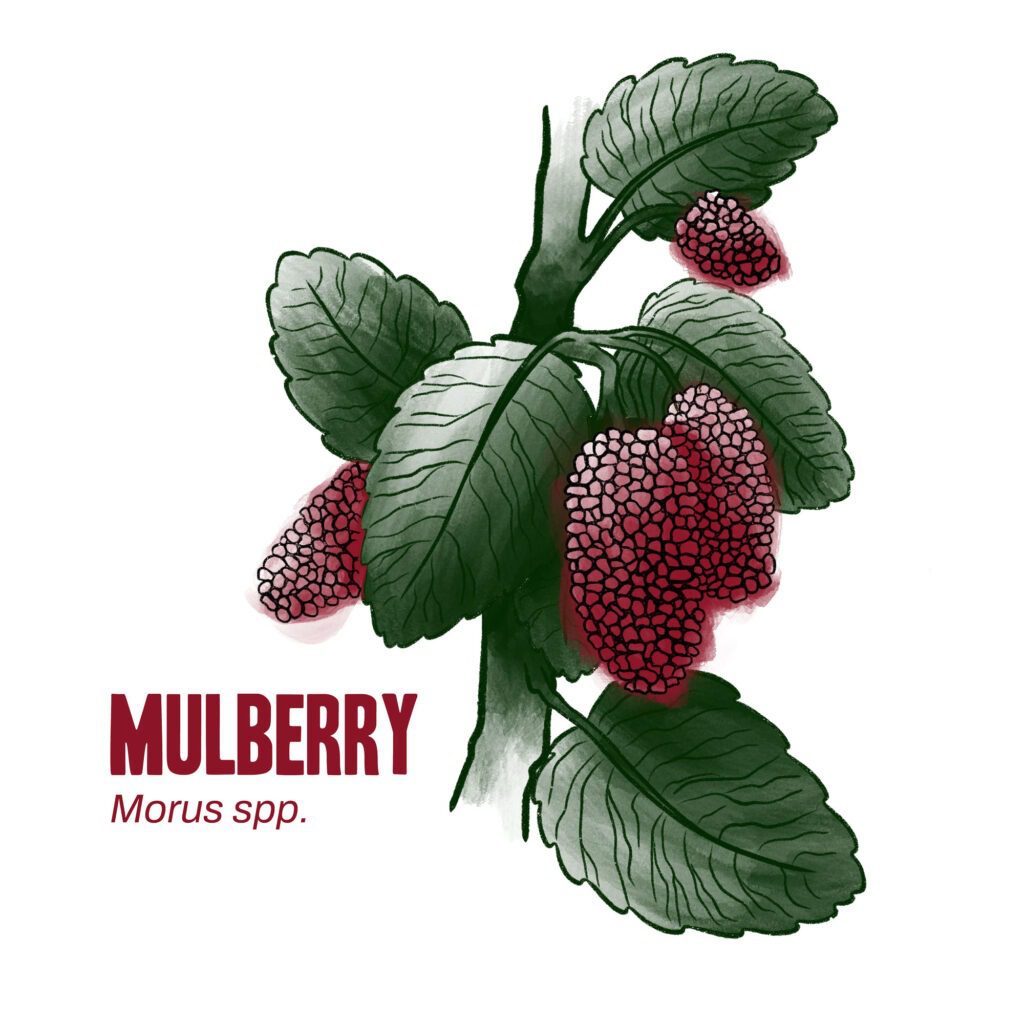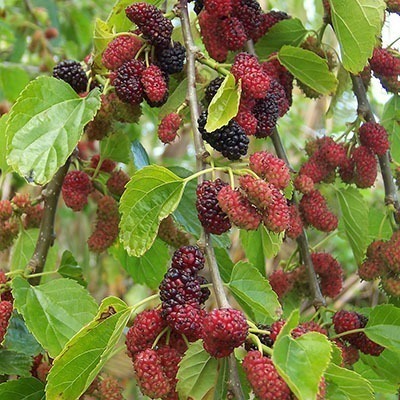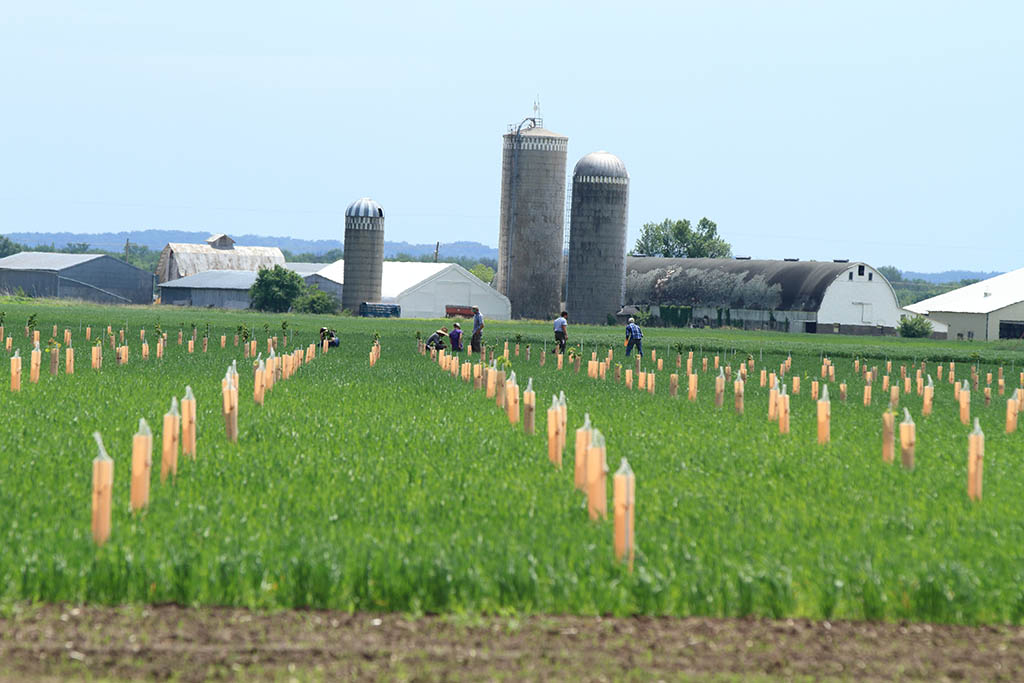
Mulberry
Morus spp.
Mulberry leaves have a feed value nearly equivalent to alfalfa, and are also drought-tolerant and perennial. The fruit is highly nutritious, loved by both humans and animals. Mulberry trees are well-suited for silvopasture systems.
DRAINAGE: Moderately to well-drained soils
LIGHT: Full sun
ZONES: 4–10
SPACING: 10 x 12 ft
YEARS TO PARTIAL/FULL BEARING: 2
Opportunities
Mulberry is a multi-purpose tree that can occupy fallow farm areas. It is well-suited for silvopasture, which describes farming and grazing practices that integrate trees into livestock pastures. Animals eat leaves and fruit from the mulberry trees, which provides an affordable livestock feed that also benefits the climate.
Challenges
Despite its exceptional qualities for feeding livestock and humans and its wide geographic range, mulberry improvement has remained largely unexplored by tree crop breeding programs in the US.
Management
Integrating poultry and hogs can help control pests. Common sense precautions, as well as legal regulations, govern best practices to prevent livestock manure from contaminating fruit for human consumption.
Our Research
Already adapted to the Upper Midwest, our tree crop breeders are selecting for vigorous plants with large, high-protein leaves that can be harvested multiple times per season using existing farm equipment. We are also evaluating trees for their fruiting habits, selecting for “ever bearing” fruit production.


RESOURCE
Black Walnut Grower Infosheet
- Review more basic grower information about plant selection and management.
- See an economics case study and find more sources for information.
- You can also print this handout to use at educational events or for outreach.


One-On-One Support for Farm Planning
Technical Assistance Program
Get help planning your perennial farm system. Our Technical Assistance Program is here to guide you through the process of planning, funding, and planting trees on your farm.

